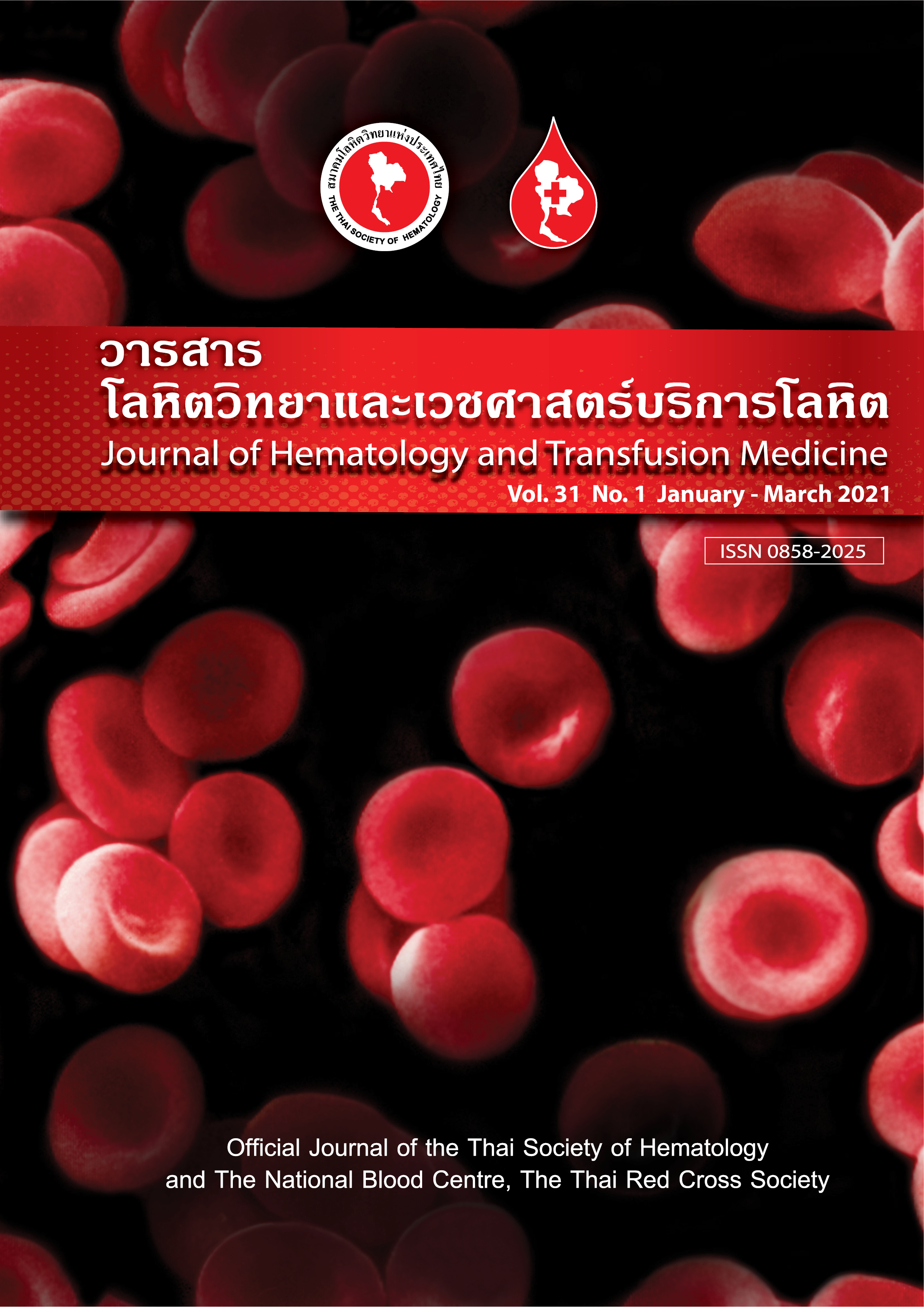Frequencies of HPA-1 to HPA-11, HPA-13, -14, -15 and HPA-17 in Thai blood donors
Keywords:
Human platelet antigen, HPA, Genotype frequencies, Thai blood donorsAbstract
Abstract:
Introduction: Human platelet antigen (HPA) systems are involved in fetal-neonatal thrombocytopenia, platelet transfusion refractoriness, and post-transfusion purpura. The HPA genotyping is beneficial in the diagnosis and treatment. Objective: This retrospective study aimed to determine genotype frequencies of HPA-1 to HPA-11, HPA-13 to HPA-15 and HPA-17 in Thai blood donors. Materials and Methods: Totally, 10,510 donor samples were genotyped for HPA-1, -2, -4, 5, and HPA-6, and extended genotypes by real time-PCR. Consequently, 2,009 samples were genotyped for HPA-3, -7, -8, -9, -10, -11, -13, -14,-15 and HPA-17. The frequencies were compared with other populations previously reported. Results: Among blood donors, the frequencies of HPA-1a and HPA-1b were 0.981 and 0.019; HPA-2a and HPA-2b were 0.953 and 0.047; HPA-3a and HPA-3b were 0.564 and 0.436, respectively. The frequencies of HPA-4a and HPA-4b were 0.999 and 0.001; HPA-5a and HPA-5b were 0.967 and 0.033 and HPA-6a and HPA-6b were 0.985 and 0.015. For the HPA extended genotypes, the most common was homozygous aa, followed by heterozygous ab and homozygous bb was rare. The HPA-4b4b was not found while, only one donor with HPA-6b6b was observed. The prevalence rates of HPA-1 to HPA-6, and HPA-15 were similar to a related study in Thai blood donors and showed significantly different from other Asian populations previously reported. Conclusion: This study showed genotype frequencies of HPA-1 to HPA-6, and HPA-15, and extended genotypes in Thai blood donors. This data is useful to provide HPA-matched platelet donors for patients with HPA antibodies. In addition, the data file could provide appropriate panel cells not only to identify antibody specificity but also to increase transfusion safety.



